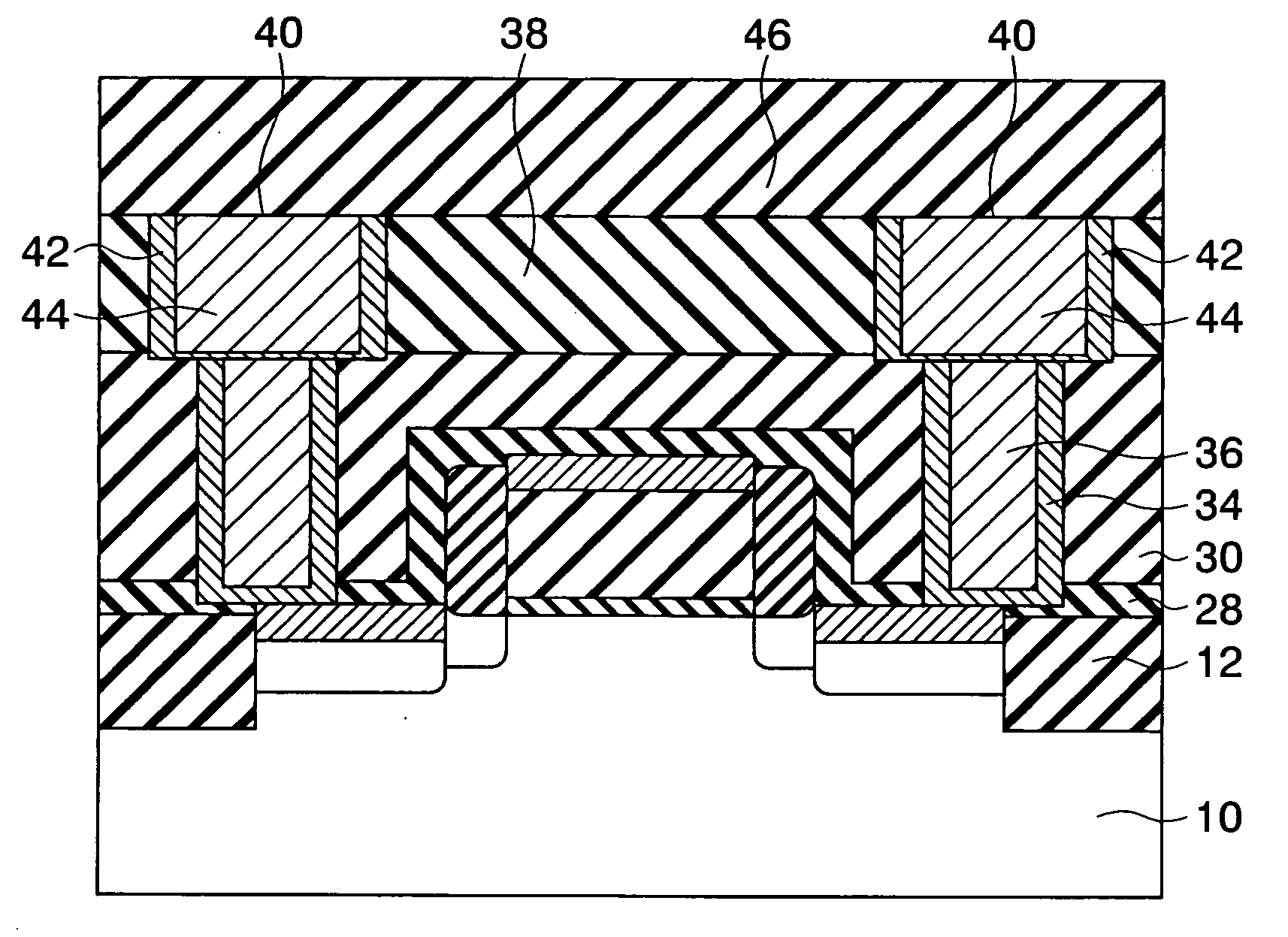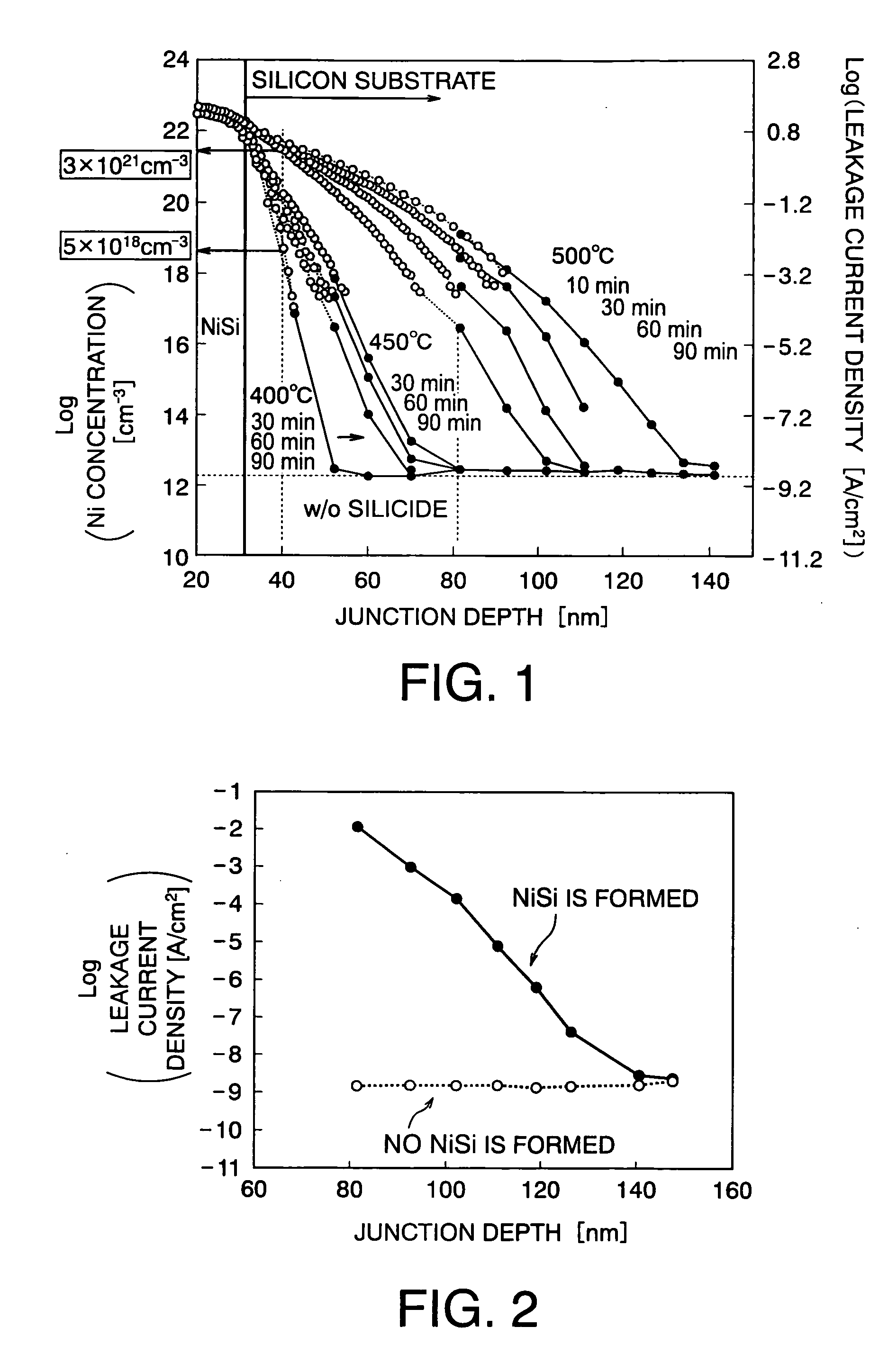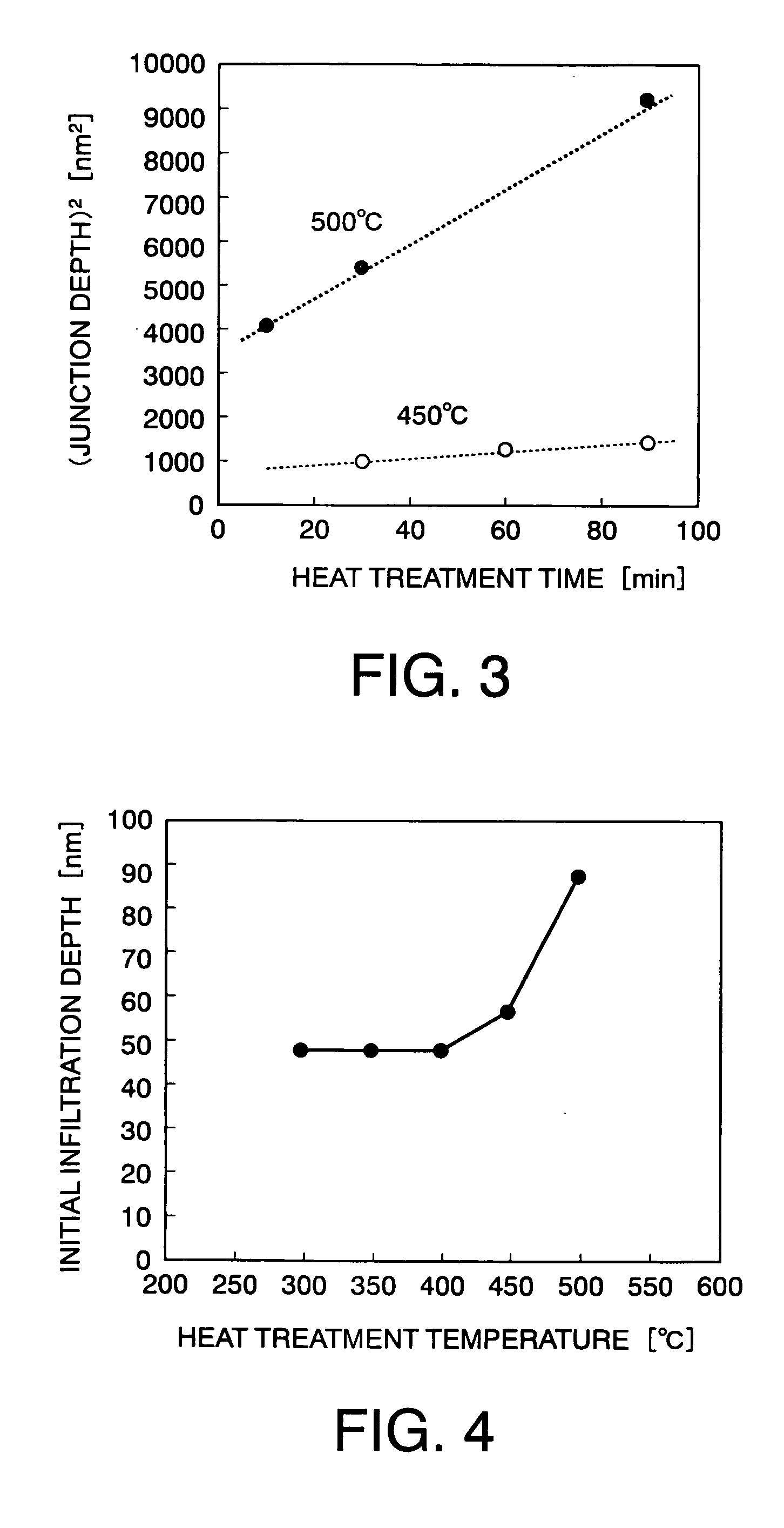Semiconductor device and method of manufacturing the same
a semiconductor and semiconductor technology, applied in the direction of semiconductor devices, semiconductor/solid-state device details, electrical equipment, etc., can solve the problems of affecting the entire circuit function, causing various kinds of problems, and shrinking the dimensions of mosfets
- Summary
- Abstract
- Description
- Claims
- Application Information
AI Technical Summary
Problems solved by technology
Method used
Image
Examples
embodiment
[0070] (Embodiment)
[0071] Hereinafter, a semiconductor device according to an embodiment of the present invention will be described with reference to FIGS. 8 to 16, which are cross sectional views showing the steps of manufacturing the semiconductor device of this embodiment. The semiconductor device of this embodiment has a salicide type MOSFET structure, in which the diffusion of Ni atoms into the silicon substrate is curbed, and a NiSi layer is formed on the source, drain, and gate electrodes in a self-aligned manner. This semiconductor device is manufactured by a simplified manufacturing process.
[0072] First, as shown in FIG. 8, shallow trenches are formed on a surface of a silicon semiconductor substrate 10 with a lithography process, an RIE (Reactive Ion Etching) process, etc. Then, an insulating layer is formed by the CVD (Chemical Vapor Deposition) method, and the surface thereof is planarized by the CMP (Chemical Mechanical Polishing) method, thereby forming shallow trench ...
PUM
 Login to View More
Login to View More Abstract
Description
Claims
Application Information
 Login to View More
Login to View More - R&D
- Intellectual Property
- Life Sciences
- Materials
- Tech Scout
- Unparalleled Data Quality
- Higher Quality Content
- 60% Fewer Hallucinations
Browse by: Latest US Patents, China's latest patents, Technical Efficacy Thesaurus, Application Domain, Technology Topic, Popular Technical Reports.
© 2025 PatSnap. All rights reserved.Legal|Privacy policy|Modern Slavery Act Transparency Statement|Sitemap|About US| Contact US: help@patsnap.com



